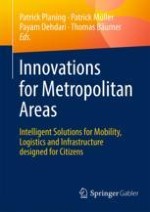2020 | OriginalPaper | Chapter
9. An Integrated Model of the Theory of Reasoned Action and Technology Acceptance Model to Predict the Consumers’ Intentions to Adopt Electric Carsharing in Taiwan
Authors : Samira Buschmann, Mei-Fang Chen, Georg Hauer
Published in: Innovations for Metropolitan Areas
Publisher: Springer Berlin Heidelberg
Activate our intelligent search to find suitable subject content or patents.
Select sections of text to find matching patents with Artificial Intelligence. powered by
Select sections of text to find additional relevant content using AI-assisted search. powered by
